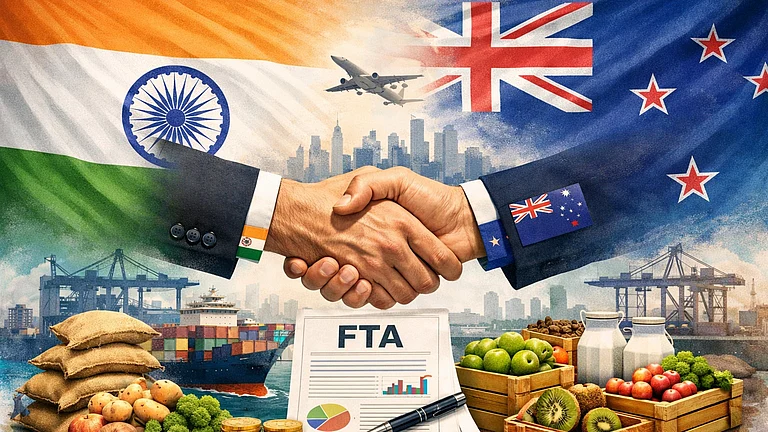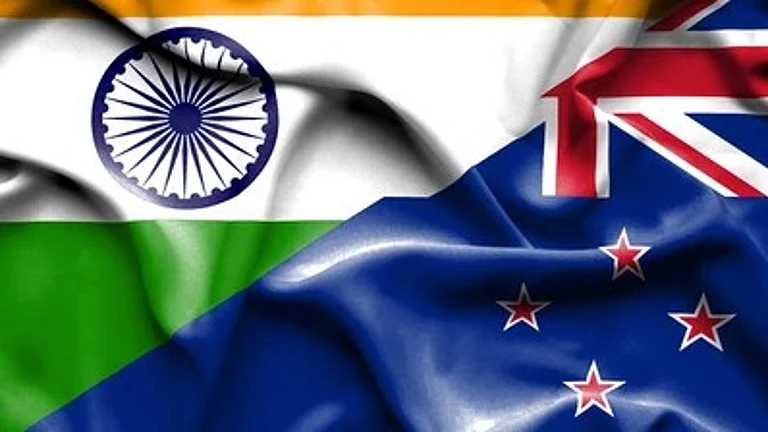
India-UK Free Trade Agreement removes the 8.9% export duty on Indian seafood products, potentially tripling exports to ₹3,000 crore in the next three years from the current ₹1,000 crore.
Gujarat, with a 2,300 km coastline, stands to benefit significantly, as it contributes a major share to India's seafood exports, including shrimp from south Gujarat and fish from Saurashtra.
The UK seafood market, worth USD 5.4 billion, currently sources only 2.2% from India.
Seafood exports from India to the United Kingdom would witness a three-fold jump in the coming years after the removal of duty on fisheries products under the India-UK free trade agreement, according to industry leaders.
Since Gujarat, having a coastline of nearly 2,300 kilometers, is one of the key states contributing to India's seafood exports, industry leaders believe that the increase in India's exports will also help Gujarat-based fishermen, exports and the entire ecosystem attached with this industry.
Gujarat-based exporter Jagdish Fofandi said the relief in export duty would take India's seafood export to the UK from current levels of ₹1,000 crore to nearly ₹3,000 crore in three years.
At present, the UK levies 8.9% export duty on Indian seafood products such as fish and shrimp, said Fofandi, former national president of Seafood Exporters Association of India (SEAI).
"Now, after the signing of the trade agreement, there will be zero duty on such products exported to the UK from India. The UK imports seafood worth USD 5.4 billion from across the world every year.
"However, India's share in this basket is just 2.2%, which comes to ₹1,000 crore at present," said Fofandi.
With the reduction in the duty, Indian seafood items will be cheaper by nearly 8 to 9% for the buyers in the UK, making Indian products more competitive in comparison to other countries, said Fofandi, former vice president of Marine Products Export Development Authority (MPEDA).
"We are assuming that in the next three years, there is a potential growth of 300%. Thus, I am seeing that our export will go up from the current level of ₹1,000 crore to ₹3,000 crore. Since Gujarat is a major contributing state, this new market will certainly benefit our fishermen, exporters and everyone associated with this business," said Fofandi.
Shrimp constitutes 70% of the total export basket of Indian seafood. However, it is facing stress from US and other markets at present, said Fofandi.
"Opening up of the UK market due to this trade deal, it will absorb some of the shock which other markets are creating to Indian exporters. This will particularly help the shrimp farming industry of south Gujarat," said Fofandi.
While south Gujarat is more into shrimp farming, the coastline of Saurashtra region contributes in exporting fish caught from the sea, said Fofandi, adding that some varieties of fish exported from that region have become popular among Indians and Chinese settled in the UK.
According to Ketan Suyani, Gujarat-based regional president of SEAI, this trade agreement will eventually help fishermen in getting better prices for the catch.
At present, Gujarat's fisheries export is roughly around ₹5,000 crore. Of these, entire Europe accounts for nearly 40% while the remaining 60% goes to the Gulf, China and other Far-east countries, said Suyani.
"This trade agreement will eventually benefit Gujarat fishermen because the demand for Indian seafood products will increase after the duty reduction. Fishermen will get better prices with the increase in export quantity," he said.
In July, India and the United Kingdom signed the Comprehensive Economic and Trade Agreement (CETA), a bilateral free trade agreement.
CETA provides an unprecedented duty-free access to 99% of India's exports to the UK, covering nearly 100% of the trade value.
This includes labour-intensive sectors such as textiles, leather, marine products, gems and jewellery, and toys as well as high-growth sectors like engineering goods, chemicals, and auto components.






























